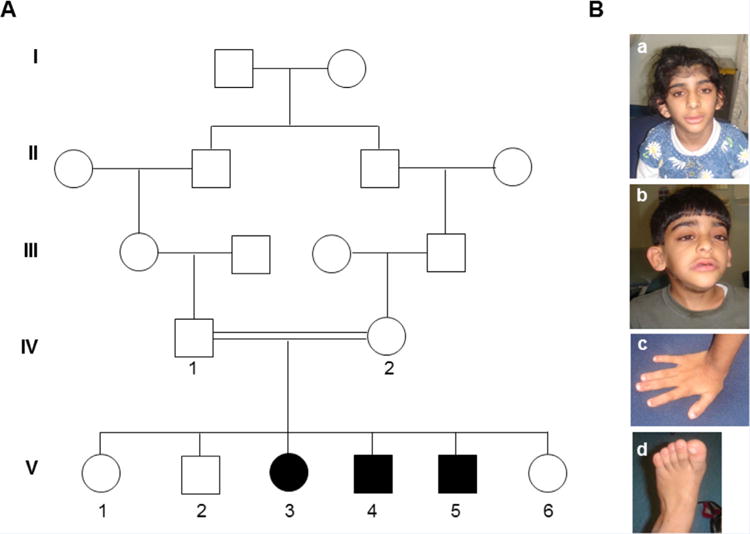FIG. 1.

Pedigree of consanguineous family with three intellectual disable children. A: Pedigree of consanguineous family showing three affected children with intellectually disable and dysmorphic features. Circles and squares denote females and males respectively, filled symbols represent affected members, double lines denote consanguineous marriage, roman numbers indicate the first generation until their offspring, arabic numbers depict all participants in this study. B: Pictures of affected children showing the typical feature of ARID1B-related ID. B.a,b: showing abnormal head shape and low-set, posteriorly rotated, and abnormally shaped ears, low anterior hair line with thick eyebrows, broad nasal tip, large mouth with thick lower lip and hypertrichosis. B.c: shows shows short fingers. B:d: shows broad big toe. [Color figure can be seen in the online version of this article, available at http://wileyonlinelibrary.com/journal/ajmga]
